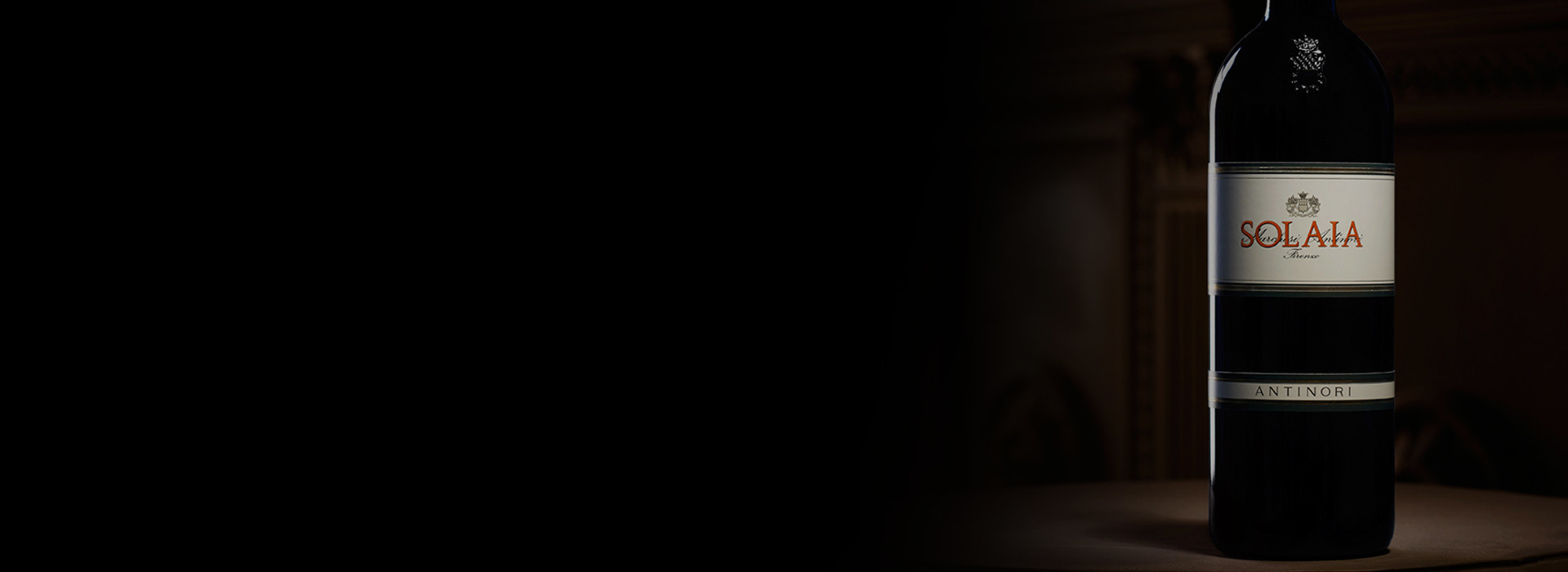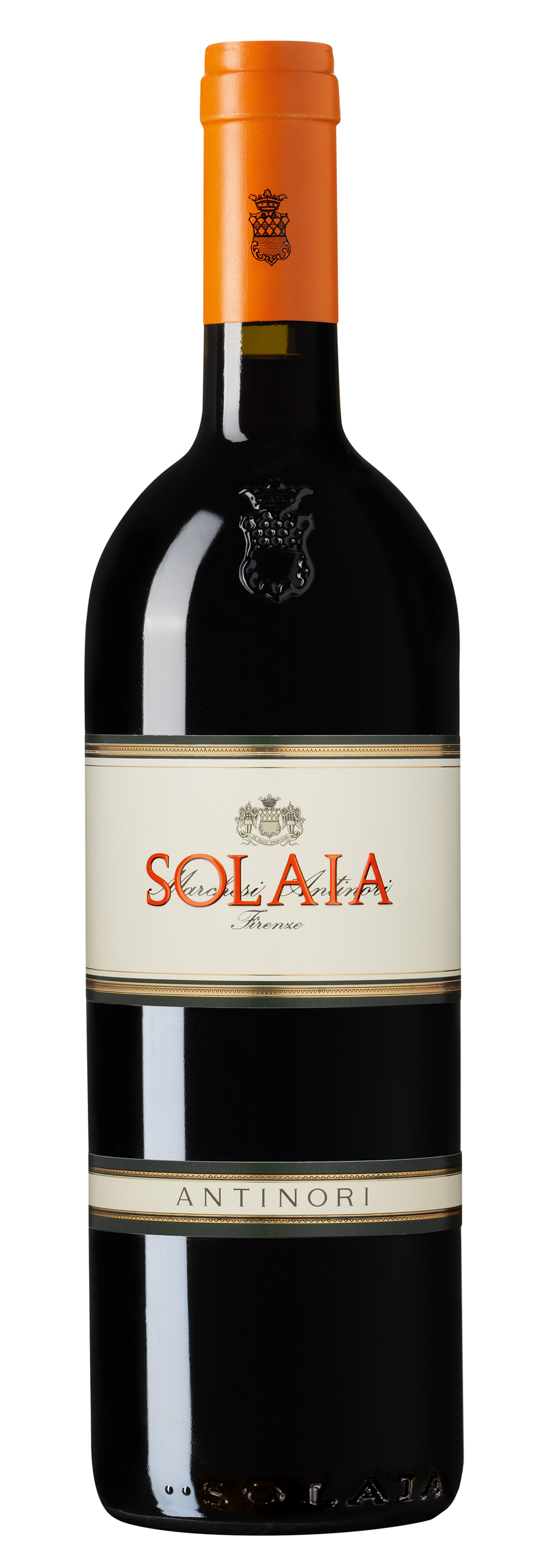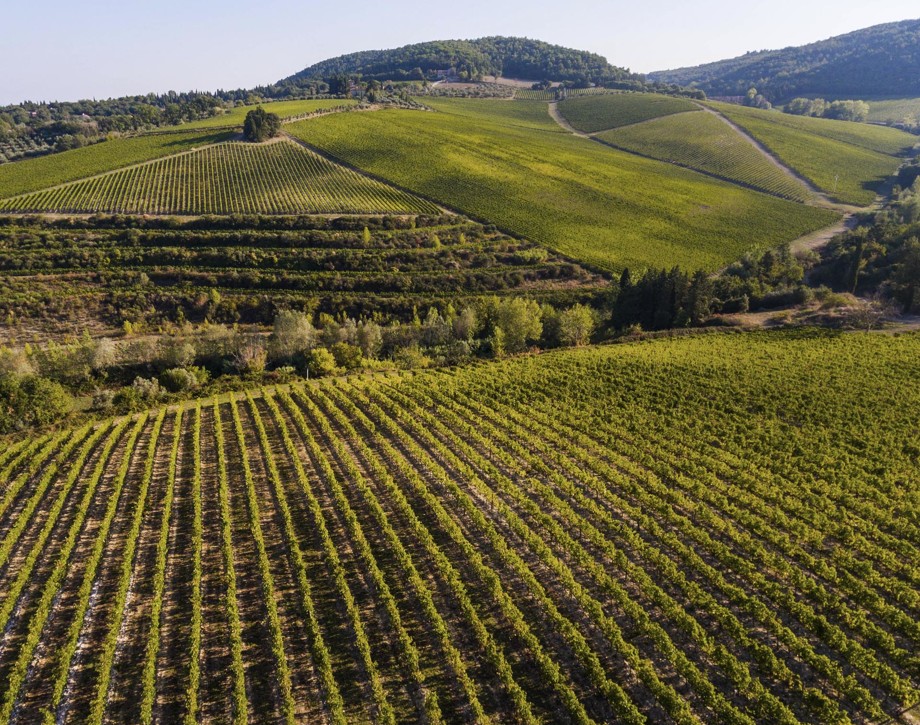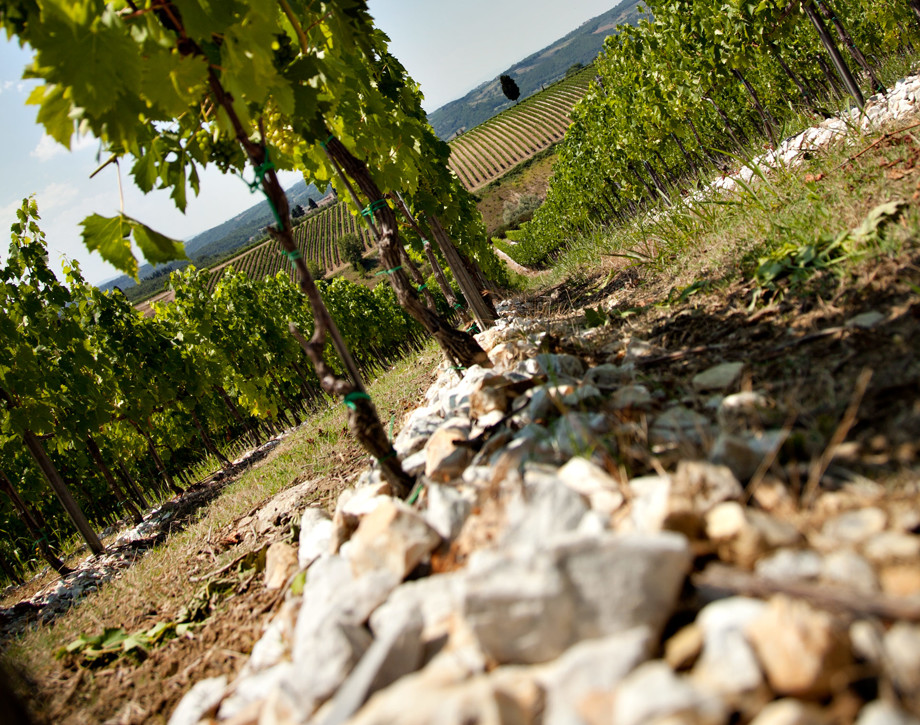Solaia

Climate
The season began with a particularly mild winter with very little rain, which caused sprouting and all other vegetative phases of the plants to take place earlier than usual. The temperatures during the first months of summer were rather hot, while in August temperatures cooled down, allowing the plants' vegetative development to proceed normally. Nevertheless, harvesting was initiated a bit ahead of schedule with respect to the average timing of preceding vintages. In September and October, the days were hot and sunny and the nights were cool, thus creating great temperature fluctuations. These fluctuations, in turn, guaranteed higher quality grapes, especially in the case of sangiovese. Right from the beginning of the process of vinification, it was clear that the clusters, and therefore also the must, were of an excellent quality. Besides having very intense aromas and colors, the sangiovese and cabernet varietals differentiated themselves by their strong typicity. The optimal climatic conditions allowed the harvest, which took place between mid-September and the first week of October, to be carried out in a precise manner with an accurate selection of only the best grape bunches.
Vinification
Due to the favorable climatic conditions during harvest time, the grapes from the Solaia vineyards could be picked according to their stage of ripeness, which resulted from their exposure to the sun as well as from the strength of the plants. We thereby obtained very high quality grapes. But despite these advantageous conditions it was still necessary to carefully hand select the grape bunches, so as to ensure the delivery of only perfect grapes in the winery—a necessity for obtaining a qualitatively high profile wine. Harvesting was done strictly by hand and, as in previous years, during vinification a lot of attention was paid to the processes of fermentation and extraction. The subsequent operations of dèlestage and pumping over were also conducted in a manner which preserved the varietal aromas and the heightened color content of the grapes. Fermentation for each varietal (sangiovese, cabernet sauvignon, and cabernet franc), took place at a temperature of around 27°C and never exceeded 31°C, in order to best preserve the olfactory characteristics and the typicity of the grapes, which were clearly present in the raw material. The musts showed complexity and varietal typicity in their aromas, demonstrating an elegance and color which foreshadowed that this would be an excellent vintage. After first racking, which was carried out when alcoholic fermentation had finished, the wines were put into oak barrels where malolactic fermentation took place by year's end. The wine was aged in French new oak barrels for approximately 18 months. Throughout this time, the various lots were individually looked after and were tasted continuously in order to control and obtain the best results possible from their aging process in the wood barrels. As usual, the evolution of each barrique was carefully monitored so as to control and guarantee the elegance and character of the tannins: which are also a result of the periodic racking that was carried out. The wine was subsequently blended and bottled on the estate, then aged for one more year in the bottle before being released on the market.
Historical Data
Solaia is a 50 acre (20 hectare) vineyard with a southwestern exposure located at an altitude between 1150 and 1325 feet (350-400 meters) above sea level and with a stony soil of “alberese” (hard limestone) and “galestro” (flaky calcareous clay) rock. The vineyard is located at the Tignanello estate. The Antinori family produced this wine for the first time in the year 1978, and the initial blend was 80% Cabernet Sauvignon, and 20% Cabernet Franc, a formula repeated in 1979 as well. In the following years, 20% of Sangiovese was introduced and certain adjustments were also made in the rapport between Cabernet Sauvignon and Cabernet Franc until the current blend was settled upon. Solaia is produced only in exceptional vintage, and was not produced in 1980, 1981, 1983, 1984, and 1992.
Tasting Notes
Solaia 2007 is a very complex wine with a solid and full-bodied structure. The aroma is fruity, intense, and sweet with notes of ripe cabernet which give the wine a strong individual identity. In the mouth the tannins are soft, gentle, and harmonious. The varietal notes are dominant and work together to indulge the palate with a long and wonderfully persistent finish.
Awards
Associazione Italiana Sommelier "Duemilavini 2011" Guide 5 Grappoli Italia Falstaff "Chianti Classico e Super Tuscans": 95/100 Austria Gambero Rosso "Vini d'Italia 2011" Guide Tre Bicchieri Italia I Vini Di Veronelli 2011 Super Tre Stelle Italia Antonio Galloni 97/100 USA James Suckling 97/100 USA Wine Advocate Score 97/100 USA Wine Spectator 94/100 USA

The Wine
The sunniest part of the Tignanello's hillside is home to the Solaia vineyard. The very best grapes from the very best vineyard. All the rest is passion, the utmost care and research. These are the secrets of Solaia together with the finest Cabernet Sauvignon, Cabernet Franc and Sangiovese grapes from its namesake vineyard.

Climate
The season began with a particularly mild winter with very little rain, which caused sprouting and all other vegetative phases of the plants to take place earlier than usual. The temperatures during the first months of summer were rather hot, while in August temperatures cooled down, allowing the plants' vegetative development to proceed normally. Nevertheless, harvesting was initiated a bit ahead of schedule with respect to the average timing of preceding vintages. In September and October, the days were hot and sunny and the nights were cool, thus creating great temperature fluctuations. These fluctuations, in turn, guaranteed higher quality grapes, especially in the case of sangiovese. Right from the beginning of the process of vinification, it was clear that the clusters, and therefore also the must, were of an excellent quality. Besides having very intense aromas and colors, the sangiovese and cabernet varietals differentiated themselves by their strong typicity. The optimal climatic conditions allowed the harvest, which took place between mid-September and the first week of October, to be carried out in a precise manner with an accurate selection of only the best grape bunches.
Vinification
Due to the favorable climatic conditions during harvest time, the grapes from the Solaia vineyards could be picked according to their stage of ripeness, which resulted from their exposure to the sun as well as from the strength of the plants. We thereby obtained very high quality grapes. But despite these advantageous conditions it was still necessary to carefully hand select the grape bunches, so as to ensure the delivery of only perfect grapes in the winery—a necessity for obtaining a qualitatively high profile wine. Harvesting was done strictly by hand and, as in previous years, during vinification a lot of attention was paid to the processes of fermentation and extraction. The subsequent operations of dèlestage and pumping over were also conducted in a manner which preserved the varietal aromas and the heightened color content of the grapes. Fermentation for each varietal (sangiovese, cabernet sauvignon, and cabernet franc), took place at a temperature of around 27°C and never exceeded 31°C, in order to best preserve the olfactory characteristics and the typicity of the grapes, which were clearly present in the raw material. The musts showed complexity and varietal typicity in their aromas, demonstrating an elegance and color which foreshadowed that this would be an excellent vintage. After first racking, which was carried out when alcoholic fermentation had finished, the wines were put into oak barrels where malolactic fermentation took place by year's end. The wine was aged in French new oak barrels for approximately 18 months. Throughout this time, the various lots were individually looked after and were tasted continuously in order to control and obtain the best results possible from their aging process in the wood barrels. As usual, the evolution of each barrique was carefully monitored so as to control and guarantee the elegance and character of the tannins: which are also a result of the periodic racking that was carried out. The wine was subsequently blended and bottled on the estate, then aged for one more year in the bottle before being released on the market.
Historical Data
Solaia is a 50 acre (20 hectare) vineyard with a southwestern exposure located at an altitude between 1150 and 1325 feet (350-400 meters) above sea level and with a stony soil of “alberese” (hard limestone) and “galestro” (flaky calcareous clay) rock. The vineyard is located at the Tignanello estate. The Antinori family produced this wine for the first time in the year 1978, and the initial blend was 80% Cabernet Sauvignon, and 20% Cabernet Franc, a formula repeated in 1979 as well. In the following years, 20% of Sangiovese was introduced and certain adjustments were also made in the rapport between Cabernet Sauvignon and Cabernet Franc until the current blend was settled upon. Solaia is produced only in exceptional vintage, and was not produced in 1980, 1981, 1983, 1984, and 1992.
Tasting Notes
Solaia 2007 is a very complex wine with a solid and full-bodied structure. The aroma is fruity, intense, and sweet with notes of ripe cabernet which give the wine a strong individual identity. In the mouth the tannins are soft, gentle, and harmonious. The varietal notes are dominant and work together to indulge the palate with a long and wonderfully persistent finish.
Awards
Associazione Italiana Sommelier "Duemilavini 2011" Guide 5 Grappoli Italia Falstaff "Chianti Classico e Super Tuscans": 95/100 Austria Gambero Rosso "Vini d'Italia 2011" Guide Tre Bicchieri Italia I Vini Di Veronelli 2011 Super Tre Stelle Italia Antonio Galloni 97/100 USA James Suckling 97/100 USA Wine Advocate Score 97/100 USA Wine Spectator 94/100 USA

Tenuta Tignanello
The Tenuta Tignanello estate is in the heart of Chianti Classico, in the gently rolling hillsides between the Greve and Pesa river valleys. It extends over an area of 319 hectares (788 acres), of which 130 (321 acres) are dedicated to vines. Two of the estate’s prized vineyards are on the same hillside, Tignanello and Solaia, on soils that originated from marine marlstone from the Pliocene period rich in limestone and schist. The vines enjoy hot temperatures during the day and cooler evenings throughout the growing season. The estate’s two signature wines, Solaia and Tignanello, are produced from these vineyards and have been defined by the international press as “among the most influential wines in the history of Italian viticulture”. According to Marchesi Antinori, Solaia and Tignanello are an ongoing challenge and a never-ending passion. The Tignanello estate has vineyards of indigenous Sangiovese grapes as well as some other untraditional varieties such as Cabernet Franc.

Soil
Soils originating in the Pliocene period, rich in marine fossils with veins of clay. Rich presence of calcareous rocks and marl.
















